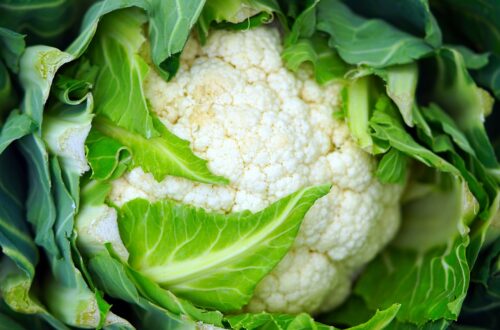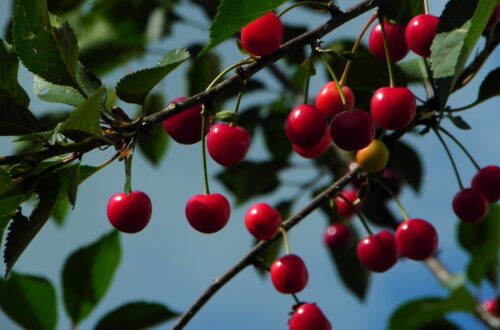
20 Flowering Plants Rabbits Will Leave Alone
Are you tired of seeing your beloved garden turn into a buffet for rabbits? If so, you’ll be glad to know that there are plenty of beautiful flowering plants that rabbits tend to avoid. Whether you’re looking for vibrant blooms, fragrant flowers, or hardy perennials, these rabbit-resistant plants can help you maintain a stunning garden without constant worry. Ready to discover the best flowering plants that can deter rabbits? Let’s dive into the details of 20 varieties that are both beautiful and bunny-proof!
1. Lavender (Lavandula)
Lavender is not only a garden favorite for its soothing fragrance and stunning purple blooms, but it also acts as a natural rabbit deterrent. Rabbits generally avoid lavender due to its strong scent, which can overwhelm their sensitive noses. Lavender thrives in well-drained soil and full sun, making it perfect for borders, rock gardens, and even containers. Plus, it’s drought-tolerant, making it a low-maintenance choice for busy gardeners. You can enjoy the added bonus of attracting pollinators like bees and butterflies while keeping rabbits at bay.

2. Marigolds (Tagetes)
Marigolds are vibrant annuals that are known for their pest-repelling properties, including rabbits. The strong scent of marigolds can deter rabbits from munching on your plants. These flowers come in a range of colors, from bright yellows to deep oranges, and they bloom profusely throughout the growing season. Marigolds are easy to grow, thriving in full sun and well-drained soil. They also make excellent companion plants in vegetable gardens, as they can help repel other pests as well.

3. Daffodils (Narcissus)
Daffodils are another excellent option for rabbit-resistant gardens. These cheerful spring bloomers contain toxic compounds that make them unappealing to rabbits and other wildlife. Daffodils are available in a variety of colors and shapes, from classic yellow trumpets to delicate white and pink varieties. They are easy to grow and naturalize well in gardens, creating a beautiful display year after year. Plant them in clusters for the most dramatic effect, and enjoy a rabbit-free garden in the spring.

4. Alliums
Alliums, members of the onion family, are not just strikingly beautiful, but they’re also a great way to keep rabbits out of your garden. The strong scent of alliums is off-putting to rabbits, making them a great choice for borders or as companion plants. These globe-shaped flowers come in various sizes and colors, including purple, pink, and white. Alliums are low-maintenance perennials that thrive in well-drained soil and full sun. Plus, they’re also deer-resistant and attract pollinators, making them a win-win for your garden.

5. Salvia (Sage)
Salvia, or sage, is another flowering plant that rabbits tend to avoid. The aromatic foliage of salvia is unpleasant to rabbits, making it a great choice for adding color and texture to your garden. Salvia blooms in shades of blue, purple, red, and pink, attracting hummingbirds and butterflies while deterring rabbits. This hardy perennial thrives in full sun and well-drained soil, and it’s drought-tolerant once established. With its long blooming season and rabbit-resistant qualities, salvia is a must-have for any garden.

6. Peonies (Paeonia)
Peonies are beloved for their large, showy blooms and sweet fragrance, but did you know they’re also rabbit-resistant? The thick, leathery leaves of peonies are not appetizing to rabbits, making them a safe choice for your garden. Peonies come in a variety of colors, including pink, white, red, and yellow, and they can live for decades with proper care. Plant them in well-drained soil and full sun, and enjoy their stunning blooms without worrying about rabbit damage.

7. Bleeding Heart (Dicentra)
Bleeding heart is a unique and charming perennial that rabbits tend to avoid. Its delicate, heart-shaped flowers hang from arching stems, creating a lovely display in shady areas of the garden. Bleeding heart prefers moist, well-drained soil and partial to full shade, making it a great choice for woodland gardens or shaded borders. The plant’s toxic sap makes it unappealing to rabbits, so you can enjoy its beauty without the threat of rabbit damage.

8. Foxglove (Digitalis)
Foxglove is a tall, stately biennial that produces spikes of tubular flowers in shades of pink, purple, white, and yellow. While foxglove is highly toxic to humans and pets, this same toxicity makes it unappealing to rabbits. Plant foxglove in well-drained soil and full sun to partial shade, and enjoy its dramatic blooms while keeping rabbits at bay. Foxglove also attracts pollinators like bees and hummingbirds, making it a great addition to any garden.

9. Catmint (Nepeta)
Catmint is a low-maintenance perennial that rabbits tend to avoid due to its strong scent. This fragrant herb produces spikes of lavender-blue flowers that bloom from late spring to early fall. Catmint is drought-tolerant and thrives in full sun and well-drained soil. It’s also a favorite of pollinators like bees and butterflies. Use catmint as a border plant or ground cover to create a rabbit-resistant barrier in your garden.

10. Yarrow (Achillea)
Yarrow is a hardy perennial that rabbits typically avoid. Its feathery foliage and clusters of flat-topped flowers add texture and color to the garden. Yarrow blooms in shades of yellow, pink, red, and white, and it’s a favorite of pollinators. This drought-tolerant plant thrives in full sun and well-drained soil, making it a great choice for low-maintenance gardens. Yarrow is also known for its medicinal properties, adding another layer of interest to your garden.

11. Ageratum (Ageratum houstonianum)
Ageratum, also known as floss flower, is a charming annual with fluffy, powder-blue flowers that rabbits generally avoid. The plant’s slightly hairy leaves are unappealing to rabbits, making it a good choice for rabbit-prone areas. Ageratum blooms continuously from spring until frost, adding a pop of color to your garden beds and containers. It thrives in full sun to partial shade and prefers well-drained soil.

12. Snapdragons (Antirrhinum majus)
Snapdragons are classic garden favorites with their tall spikes of colorful flowers that bloom from spring to fall. Fortunately, rabbits usually leave snapdragons alone due to their bitter taste. These annuals come in a wide range of colors, from pastel pinks and yellows to bold reds and purples. Snapdragons thrive in full sun and well-drained soil, making them versatile additions to any garden. Use them in borders, containers, or cutting gardens for a rabbit-resistant display.

13. Bee Balm (Monarda)
Bee balm is a vibrant perennial that attracts pollinators like bees, butterflies, and hummingbirds while deterring rabbits. Its aromatic foliage and tubular flowers in shades of red, pink, and purple make it a standout in any garden. Bee balm thrives in full sun to partial shade and prefers moist, well-drained soil. It’s also resistant to mildew, making it a low-maintenance option for gardeners looking to keep rabbits at bay.

14. Russian Sage (Perovskia atriplicifolia)
Russian sage is a tough, drought-tolerant perennial that rabbits tend to avoid due to its strong scent and woody stems. This plant produces tall spikes of lavender-blue flowers that bloom from mid-summer to fall. Russian sage thrives in full sun and well-drained soil, making it perfect for hot, dry climates. Use it as a border plant or in mass plantings to create a rabbit-resistant barrier in your garden.

15. Coral Bells (Heuchera)
Coral bells are known for their colorful foliage and delicate bell-shaped flowers, but they’re also rabbit-resistant. The thick, leathery leaves of coral bells are unappealing to rabbits, making them a great choice for shady gardens. Coral bells come in a wide range of colors, from deep purples to bright greens, adding year-round interest to your garden. They thrive in partial to full shade and well-drained soil, making them perfect for woodland gardens or shaded borders.

16. Echinacea (Echinacea purpurea)
Echinacea, or coneflower, is a hardy perennial that rabbits usually avoid. Its tough, spiky foliage and large, daisy-like flowers make it a striking addition to any garden. Echinacea blooms in shades of pink, purple, white, and yellow, attracting pollinators while deterring rabbits. This low-maintenance plant thrives in full sun and well-drained soil, and it’s also drought-tolerant. Use echinacea in borders, wildflower gardens, or as a focal point in your landscape.

17. Coreopsis (Coreopsis spp.)
Coreopsis, also known as tickseed, is a cheerful perennial that rabbits generally leave alone. Its bright yellow, orange, or pink flowers bloom profusely from early summer to fall, adding a burst of color to your garden. Coreopsis is easy to grow and thrives in full sun and well-drained soil. It’s also drought-tolerant, making it a low-maintenance option for busy gardeners. Use coreopsis in borders, mass plantings, or as a ground cover to create a rabbit-resistant garden.

18. Lantana (Lantana camara)
Lantana is a heat-loving perennial that rabbits tend to avoid due to its strong scent and slightly toxic foliage. This plant produces clusters of brightly colored flowers that attract butterflies and hummingbirds while deterring rabbits. Lantana blooms in shades of red, orange, yellow, pink, and purple, creating a vibrant display in your garden. It thrives in full sun and well-drained soil, making it perfect for hot, dry climates. Lantana is also drought-tolerant and can be used in borders, containers, or as a ground cover. Its rabbit-resistant qualities make it a great addition to any garden where you want to keep the bunnies at bay.

19. Verbena (Verbena spp.)
Verbena is a versatile flowering plant that rabbits typically avoid. This plant produces clusters of small, colorful flowers that bloom continuously from spring to fall. Verbena thrives in full sun and well-drained soil, making it an excellent choice for containers, borders, and hanging baskets. It’s also drought-tolerant and attracts pollinators like butterflies and bees. With its long blooming season and rabbit-resistant nature, verbena is a valuable addition to any garden.

20. Gaillardia (Gaillardia spp.)
Gaillardia, also known as blanket flower, is a hardy perennial that rabbits usually steer clear of. Its daisy-like flowers bloom in vibrant shades of red, orange, and yellow, adding a warm splash of color to your garden. Gaillardia thrives in full sun and well-drained soil, and it’s drought-tolerant once established. This low-maintenance plant blooms from early summer to fall, providing long-lasting color and rabbit resistance in your garden.

Creating a beautiful garden that’s also rabbit-resistant is possible with the right plant choices. From fragrant herbs like lavender and sage to vibrant blooms like marigolds and lantanas, there are plenty of flowering plants that rabbits tend to avoid. By incorporating these 20 plants into your garden, you can enjoy a stunning, colorful landscape without worrying about rabbits feasting on your hard work.


